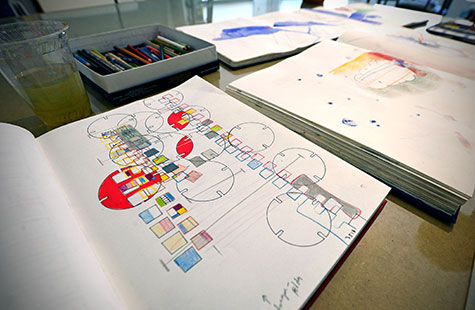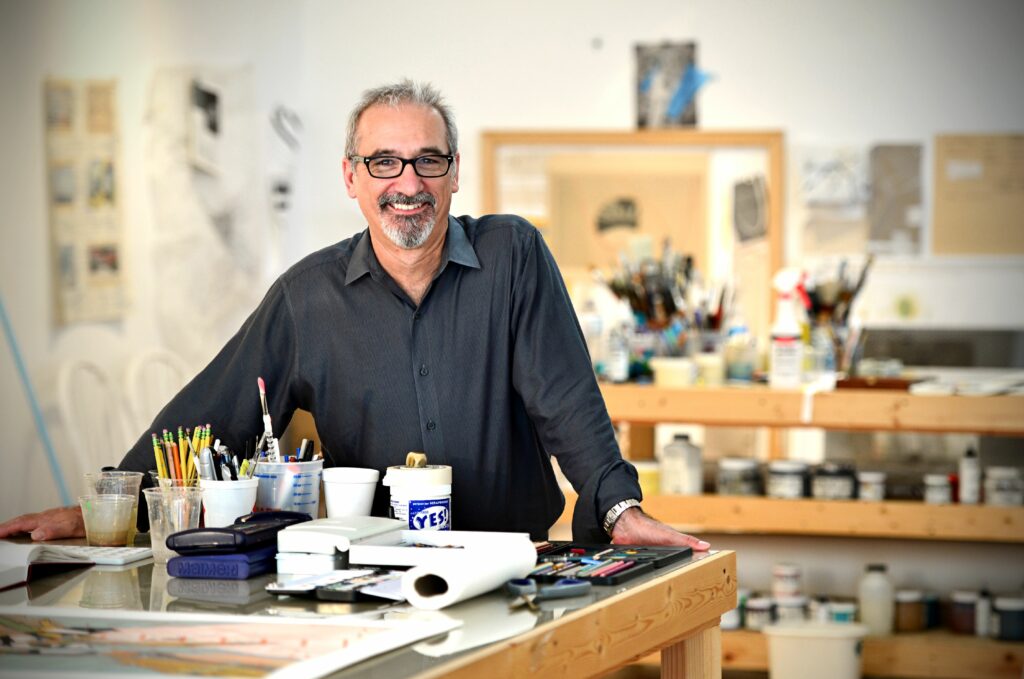
For Carmon Colangelo, drawing is both an expressive art and a daily practice. At the office or in the studio, a sketchbook is always near at hand.
It is also deeply symbolic. At the Sam Fox School of Design & Visual Arts — where Colangelo serves as dean and as the E. Desmond Lee Professor for Collaboration in the Arts — drawing serves as a kind of connective tissue, the basic, introductory training that unites the College of Art and the College of Architecture within the Sam Fox School.
We sat down with Colangelo to discuss drawing, the importance of confidence and the advantage of starting in the middle of the book.
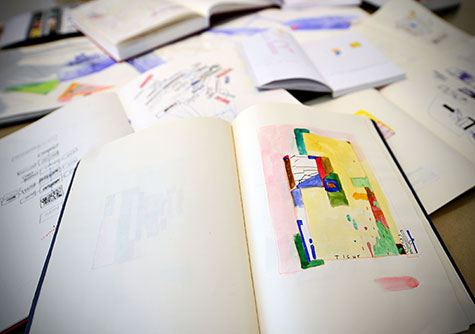
You resist the word “doodle.” Why?
When I’m drawing, I feel more awake, more alert. Drawing helps me focus and organize myself — it’s a form of notation or note-taking, a way of capturing and structuring ideas. I think through drawing. I listen through drawing. There’s something frivolous about “doodle.”
The experience of drawing can be fun and freeing — it can take you away from where you are and into this whole other creative realm. But there’s another part that’s always serious. Even when I’m just playing, it’s within the context of knowing that something might get translated into a print or a larger drawing.
So I guess I want to have it both ways. (Laughs)
Are there particular habits or practices that help you get started?
With a new book, the first page is always a little intimidating, so I like to begin in the middle. I also often start in the middle of each page and then begin working outward, circling around, filling space. It’s not linear, but it allows for unexpected associations. It becomes a kind of mental map-making.
I think the best art comes when you’ve warmed up — when you’re feeling loose and put something down and then something unexpected occurs. You follow the most interesting tangents.
But you also have to be disciplined. You have to make art part of your day, part of your routine. It takes organization to capture those moments of inspiration.
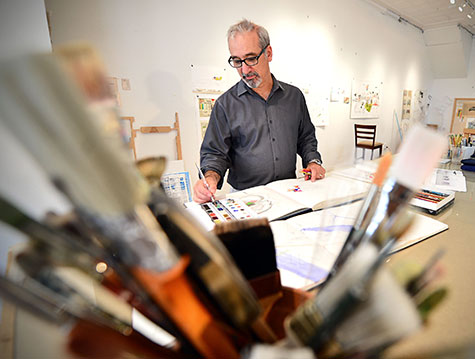
As we’ve been talking you’ve pulled small sketchbooks from your desk, your bookshelf, your jacket, the credenza behind your chair … You’ve got them stashed everywhere.
Bruce Lindsey (dean of architecture) keeps a drawing book. He likes to say that he won’t start a new one until he fills it all up, front to back. My process is completely different. I grab whatever’s at hand! (Laughs.)
You often draw in meetings and lectures. Talk about that.
People sometimes have the idea that when you’re drawing, or doodling, you’re not really paying attention. But when I make notations during a meeting, I am listening. I’m capturing the ideas and information I need.
Today, there are business programs that have oriented themselves around design thinking. People are becoming more aware that the experience of making — of capturing ideas, critiquing them and having to produce something — is critical to the way we learn. Every kid draws. We draw before we can write. There is a directness, and purity, in that communication.
At the Sam Fox School, we have a class on artistic practice in which we ask everyone to keep a sketchbook. We ask them to draw while they’re in lecture halls, on the phone, drinking coffee … The best ideas don’t necessarily come when you’re in the studio.
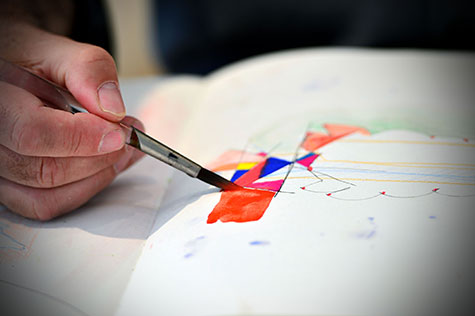
Does creating a drawing about something help anchor it in your memory?
Oh, for sure, especially if you’re drawing from direct observation. There might have been a fleeting thought that the drawing suddenly brings back. It can feel like going back in time.
But it’s also important to mediate the drawing, to return to it and rework it in some way. For example, I might take some initial notes but later change the emphasis by adding color.
The new thought gets added to the old thought. The drawing becomes a kind of accumulated knowledge.
Your approach seems poised between play and intentionality.
Artists are trained to understand the intellectual and conceptual components of drawing. But we’re also granted a certain amount of permission. Playing helps you relax, helps you let your guard down. When you’re playing, you allow things to happen.
But playing takes confidence. You can’t be afraid to fail, to do things that might look or feel silly, to let your mind wander or to be affected by your environment.
When I was younger I took everything very seriously. (Laughs.) Now I feel less serious, but more confident.
And I think it results in better work.
